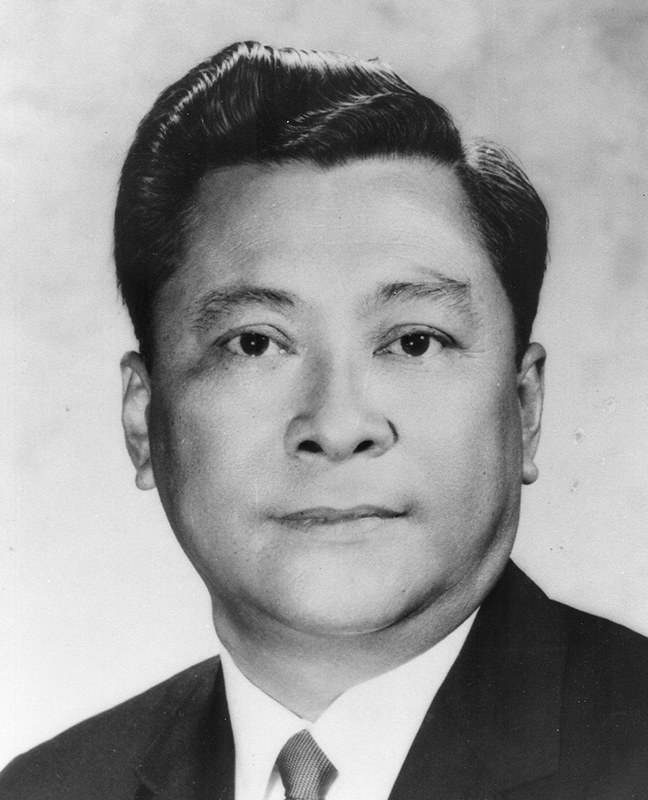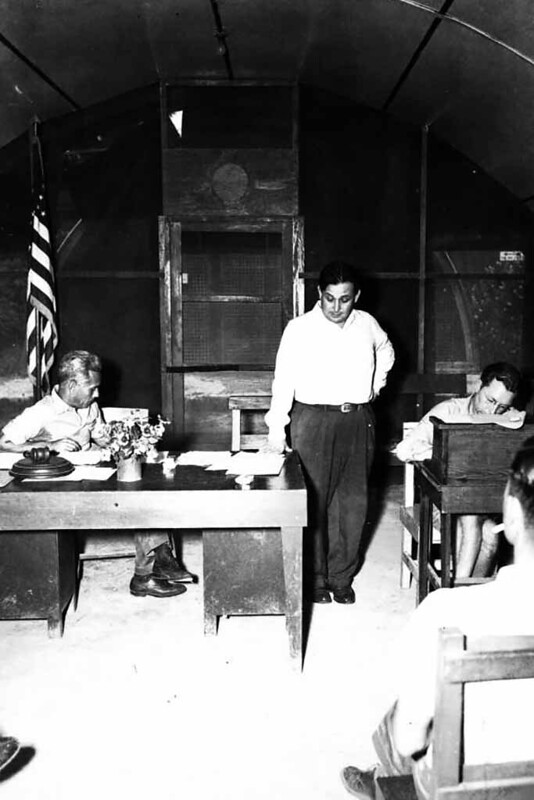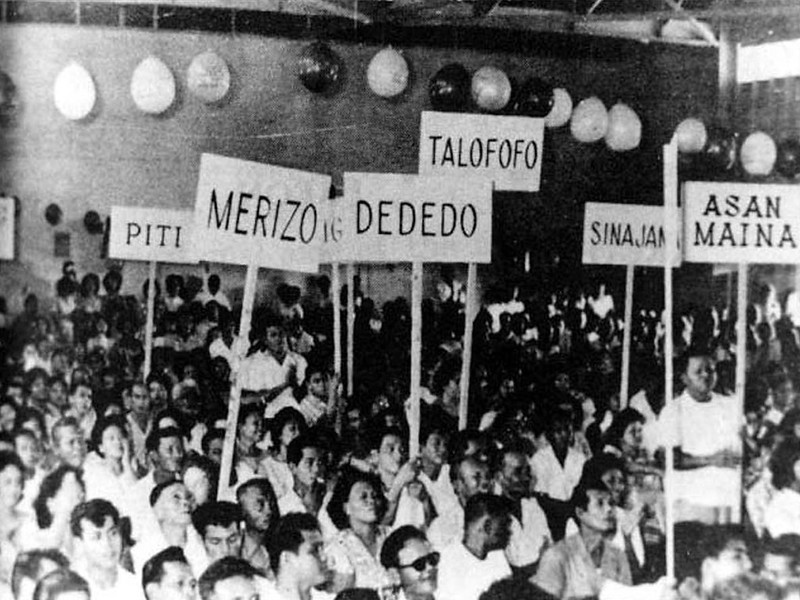Territorial Party of Guam
Beginning of two-party politics
The formation of the Territorial Party of Guam was the beginning of the two-party political system on Guam, which previously only had one political party; the Popular Party. The Territorial Party, while it never rivaled the Popular Party in terms of popularity for any length of time, was nonetheless instrumental in shaping the politics and future politicians for many years after its existence.
One of its most lasting effects, for example, was that from the formation of the Territorial Party, the Republican Party of Guam was formed. Prior to the formation of the Territorial Party in 1956, the first two Guam Legislatures (from the first election for the Guam Legislature in 1950) were controlled by the Popular Party, with a couple of independents gaining seats. But in I Mina’ Tres na Liheslaturan Guåhan/the 3rd Guam Legislature, a controversy arose regarding who would be Speaker of the Legislature.
Influential leader Antonio B. Won Pat had been speaker for the first two Guam legislatures, but in the 3rd Guam Legislature, eight of his Popular Party colleagues accused him of reneging on a gentlemen’s agreement that the speakership would be rotated every two terms. Won Pat denied that such an agreement was made and refused to give up the speakership to Senator Francisco B. Leon Guerrero. The eight dissenting Popular Party senators then teamed up with three independents to form a new majority, and elected FB Leon Guerrero as the Speaker.
Several attempts at reconciliation during 3rd Guam Legislature failed, and when it was clear to the eight Popular Party senators that their colleagues wouldn’t accept them back, they joined the independents and formed the Territorial Party just months before the 1956 election.
1956 was the first hard-fought campaign
It was the first hotly contested election between two parties on Guam, and it was a bitter and hard-fought campaign. The Popular Party out-fought their new opponents, and drew crowds of close to 5,000 supporters at many of their town meetings, compared to 200 at the most for the Territorial meetings. Led by Senator James T. Sablan, the Popular Party launched fierce nightly attacks on the leaders of the Territorial Party, and the Popular Party ended up winning all 21 twenty-one seats (called a “blackjack” victory after the card game).
The first Territorial Party candidates included some of Guam’s most recognizable leaders, including Agueda Johnston, Lagrimas LG Untalan, and Cynthia J. Torres, and incumbents Eduardo T. Calvo, Francisco B. Leon Guerrero and his brother Pedro, Frank D. Perez and his brother Gregorio, Felix T. Carbullido and his brother Albert and Antonio SN Duenas, along with former Island Judge Vicente C. Reyes. Because of family relationships among these candidates, the Popular Party campaigned against them as the “party of the rich,” and against what it called the “familia system,” and it struck a chord with the electorate. While the Territorial Party continued to campaign hard for the next few elections, the Popular Party continued to dominate the 1958, 1960 (another blackjack victory), and 1962 elections (the Popular Party changed its name to the Democratic Party of Guam in 1960).
FB Leon Guerrero led the Territorials as party chairman until 1960, when Carlos P. Taitano became chairman. The Territorials began to draw large crowds at its annual convention, with nearly 2,500 people attending and filling the George Washington High School auditorium (then located in Mongmong). Other chairmen of the party included Vicente C. Reyes (1962), Taitano again in 1964 and 1969, Antonio Q. Sablan in 1966, and Paul McDonald Calvo in 1968.
Finally, success in 1964
However, success came for the Territorial Party when it won a strong victory in the 1964 election with several strong young candidates. The party won 13 thirteen seats in I Mina’ Ocho na Liheslaturan Guåhan/ the 8th Legislature, with new candidates such as Carlos Garcia Camacho and Paul McDonald Calvo (son of Eduardo T. Calvo), both future governors, and Kurt S. Moylan, a future lieutenant governor. Former party leader FB Leon Guerrero wasn’t running for office after suffering from a stroke in 1962. Carlos P. Taitano was elected Speaker, and other Territorials included G. Ricardo Salas, Carlos P. Bordallo, and Frank Perez.
With their new majority, senators from the Territorial Party caused a major shift in policy. While Governor Manuel Guerrero had launched massive urban renewal and housing programs the year before using a large infusion of federal money, the Territorial majority blocked the Democrat-supported program. They preferred instead to promote private investment and passed a law, authored by Sen. Frank D. Perez, authorizing Guam Economic Development Authority (GEDA) to provide up to $1.5 million in tax rebates (called Qualifying Certificates or QCs) to investors, and authorization to issue tax-exempt bonds for the financing of businesses. These strong incentives helped draw Japanese investors to set up hotels on Guam, and this economic stimulus is credited with the boom of the next few decades.
Transformation into Republican Party
In the 1966 elections, however, the Democrats blasted the Territorials for blocking the popular urban renewal program. The Territorials were ousted from the Legislature, as the Democrats won another blackjack victory. Paul Calvo was the top vote-getter for the Territorials, but garnered nearly 1,000 fewer votes than the lowest-ranking Democrat. The Territorial candidates were crushed, and the party slowly dissolved over the next few years. Some of its members, including former Governor Joseph Flores, Carlos Camacho, and Kurt Moylan, formed the Republican Party of Guam on 21 November 1966, and over the next few years drew many of the former Territorial members into the new party.
Former Territorial members played a big part in politics for years to come, including two of Guam’s first three elected governors (Camacho and Calvo) and in Republican-led legislatures in the 1970s.
For further reading
Rogers, Robert. Destiny’s Landfall: A History of Guam. Honolulu: University of Hawai’i Press, 1995.
Sanchez, Pedro C. Guahan Guam: The History of Our Island. Hagåtña: Sanchez Publishing House, 1987.















